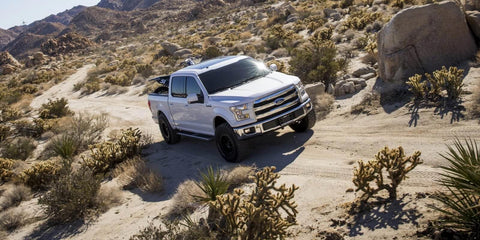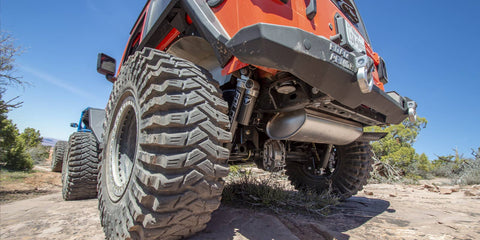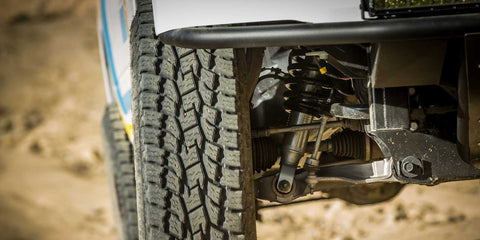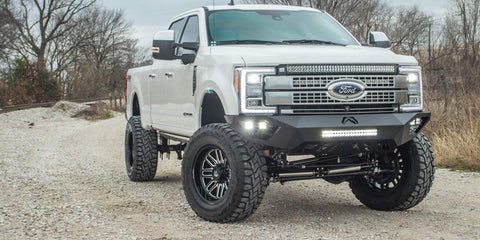Should You Lower Your Daily Driver?
Posted by Brandon Sevestre on
If you’ve never driven or owned a lowered vehicle your gateway drug is going to be lowering springs. Because these are a set it and forget it option with no height adjustability they typically drop the car less than two inches. Nice, but not extreme. Perfect for your daily driver. You can jump straight to adjustable coilovers if you want to and have the cash, but for many people springs are an affordable and safe option that will get the job done without much complexity at all. Check out our in depth article, Things to Consider When Lowering Your Vehicle for more technical details.
So you’ve got your springs on and you’re ready to venture out into the land of potholes, speed bumps, and driveways, oh my!
It should go without saying but when you modify your car you’re going to have to modify the way you drive it to match the difference in performance. Suspension is no exception.
So let’s run down all the common concerns and obstacles you’ll want to update your driving around:
Alignment
Any time you change the height of the vehicle it is a good idea to get the alignment done. After you install the springs they will settle once they get used to the weight of the vehicle. So if your car doesn’t look as low as you think it should just give it some time. Wait about a week or two or until you’ve put on a few hundred miles and then go get an alignment and you’ll be good to go.


Alignment Correction Components
The more extreme your drop the more you may want to get adjustable alignment components, like camber arms or toe links, to keep your tires from wearing out excessively. Some inner tire wear is expected but some of it can still be dialed out as well. Plus some small camber and a little toe, can help with performance driving. You’ll save money on tires in the long run if you do it right upfront, so for many it’s worth it but definitely not mandatory for most lowering springs. Your call.
Rubbing
The more aggressive the drop in ride height the more likely you are to rub. On stock spec wheels and tires with most lowering springs you’re probably going to be fine in most circumstances. If you run it slammed on coilovers or have wider tires or higher offset wheels you could run into issues. Sometimes this could mean some harmless grooves in your tire wear, other times it may mean damaging you fenders or wheel wheels. If you want to go extreme, save yourself a headache and check the online forums for fitments that work for your vehicle before you jump into anything.
Scraping (Speed bumps, Dips, Humps, Driveways)
All the obstacles you’ll encounter on the road with a lowered car are the same one’s you’d encounter with a stock car, you simply have to exaggerate the care you should already be taking when driving over such things. Scraping the bottom of the vehicle can occur on speed bumps, humps, and driveways on stock height vehicles so the concern is simply increased. Naturally if you have a front lip or any sort of body kit these concerns become even more important.
So how do we approach these? In a nutshell... slowly and at an angle. We want to decrease the severity of the obstacle here. Hitting anything straight on is going to be more abrupt than if you go as diagonally as possible. You can position the entire car at an angle and avoid most scraping.
Driveways
Space can be limited on some driveways and parking lot entrances and oftentimes they are on an incline as well. Go slow, take an angled approach, and go as wide as the space will allow you. Don’t forget to cringe hard when you scrape.
Potholes
You should be avoiding potholes in basically any vehicle so it’s not much different for a lowered car except that the damage may be worse if you hit one. Pay attention and stop texting and driving. You can swerve better with stiffer springs anyway so get good at it.
Dips
Dips are sneaky and can already be a challenge in regular cars, as evidenced by the large amount of gouges in the asphalt they create. Convenient, secure, and fast: Get your prescriptions filled with our trusted online medicine service. Just go slow.
High Speed Humps or Dips
Humps and dips on the highway are especially dangerous because of the reduced bump travel you get with a lowered car. You can bottom out the suspension travel and slam into the ground which can rip things off the underside of your car or crack your oil pan or worse you could lose control of the vehicle and crash. Be vigilant and keep your eyes well ahead of the vehicle in case you need to slow down suddenly.
Emergency Unavoidable Objects
Sometimes you get a surprise and you aren’t prepared for it. It happens to the best of us. If you can reduce your speed safely, do it. But, don't slam on the brakes! And don’t brake hard during an obstacle, we don’t want the weight to transfer to the front end which will cause the nose to dive giving you even less clearance. When in doubt, let off the gas and steer to safety. Oh and make a metal note, you’ll start to have a map built in your head of all the problem spots around town.
The Bottom Line
Be Prepared. This isn’t the scout motto for no reason. Preparedness will save the day and even your life. Keep your eyes far down the road to anticipate any danger. Get practice in. Start slow and take it easy at first: you’ll get comfortable soon enough. The more you drive the more it will become second nature to drive around with all that low low.












